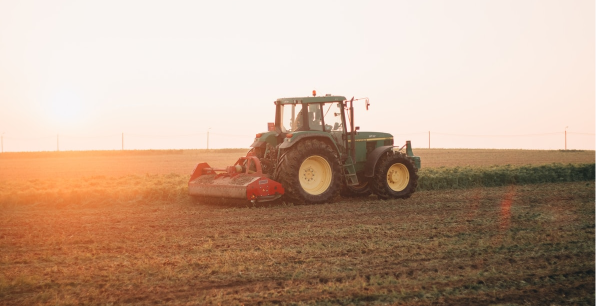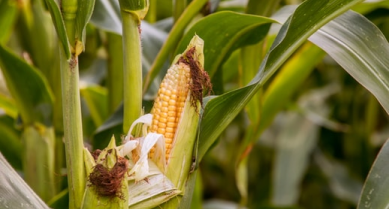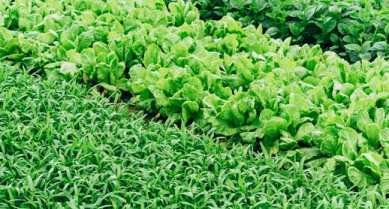State of Nature report: views from Rothamsted Research
Keeping farmers onside in the production vs. conservation debate
The ‘State of Nature 2016’ report on trends in UK wildlife between 1970 and 2013 concluded that, across all taxa, 56% of species have declined in this period in all major habitats except urban and marine environments.
Despite the fact that a greater proportion of species associated with grassland, heath and coastal habitats declined over this period than farmland species, Mark Eaton (a lead author of the report from the RSPB) chose to focus in media interviews on agricultural intensification as the main driver of these post-war losses of UK biodiversity. This conclusion was based on a review of the literature and expert opinion on the drivers of population change of individual species using data from the previous State of Nature report published in 2013.
There is no doubt that, between the 1960 and 1990s, driven by a policy supporting greater productivity, changes in agricultural practice (simplified rotations, increased inputs, loss of boundary features) had profound negative impacts on the flora and fauna using farmland as a habitat. Farmland wildlife took the big hit during this period and the evidence supports the view that the intensification of agriculture was the main culprit. This is the ‘old story’ but what’s new?
Well, changes in UK agricultural landscapes in the short term period analysed in the report (2003-2013) reflect a shift in policy associated with the decoupling of subsidies from production and towards environmental protection. This has resulted in increased habitat creation including the planting of hedgerows and establishment of field margins to provide resources for farmland birds and pollinators. Although the current evidence is that these subsidised agri-environmental schemes have had mixed results in terms of restoring biodiversity they are clearly a step in the right direction and a good thing.
There has been a measure of success, therefore, in turning the tanker from a head long pursuit of yield and productivity towards a more sustainable future that incorporates biodiversity and ecosystem services into the farmed landscape. This more positive outlook is reflected in the improved population trends documented in the report over the shorter time period. However, we have only just started steaming in the right direction and it is imperative that we retain the good will of the farming industry in facilitating biodiversity conservation, particularly with the uncertain future agricultural subsidies face after Brexit.
Rather than use the report as an opportunity to remind the public of the past ills of agricultural intensification, therefore, it would have been more constructive to emphasise these recent positive developments in agricultural land use and so keep farmers onside. We need a new narrative that moves on from the artificial polarisation of agri-business and biodiversity conservation and reflects the current trend towards the integration of crop production and ecosystem services in the landscape in a way that minimises the need to take land out of production or reduce yields.

Dr James Bell, Head of the Rothamsted Insect Survey National Capability, Rothamsted Research
The Rothamsted Insect Survey Datasets
The Rothamsted Insect Survey holds the world’s most extensive terrestrial invertebrate time series for academic study and policy development. In that role it is tasked with ensuring our high quality aphid and moth data, which extend back to 1964, are provided to organisations that wish to independently or collaboratively analyse these datasets to progress science. Some of the most recent exciting discoveries have arisen as a result of such provision. Examples include new ways to calculate spatial synchrony, the detection of the evolution of plant defences that confer resistance to herbivores like aphids and the changing seasonal timing of aphids, moths and many other taxa over several decades under climate change. It may be surprising to some that we provide data to many organisations at a rate of one request every 14 days or so.
The State of Nature consortium have previously been provided with a large moth dataset and have issued reports in 2013 and now in 2016. Ignoring the findings for one moment, it’s a testament to our commitment to recording that the UK can issue such reports, charting the changes in various taxa over time like no other country in the world can. Along with the State of Britain’s Larger Moths Report in 2013 led by Butterfly Conservation, these reports have shown that declines are evident, which is in agreement with independent networks such as the Garden Moth Scheme. Perhaps it’s worth noting that the moth report in 2013 also showed that 53 species actually increased in number.
I think the State of Nature authors will readily admit, as I will, that working at very large scales is a challenge and it’s often difficult to find parallel datasets that are as long and as detailed as the RIS data and that would show unequivocally the mechanism(s) for species declines. However, it is compelling that the Clean Air Act of 1993 has helped some lichen feeding moths, such as the Dingy Footman, that have increased spectacularly over recent decades thanks to a reduction in sulphur dioxide allowing the host to proliferate. Can we say that this is the main cause for the increase in the Footman? That’s a difficult one to state absolutely and it’s simply not possible to provide a mechanistic understanding from a correlation of lichens and adult moths caught in light traps, however suggestive. We could do a simple laboratory experiment but this would ignore some of the collinear effects such as a change in winter temperature, population regulators, light pollution and the unknown unknowns.
Whilst not understanding the mechanisms, the declines are the best insight into biodiversity changes that are attainable, but we need more studies on how we can help reverse those trends. Rothamsted is committed to playing its part in that and over the next four years as part of a PhD project we’ll examine new seed mixes and field margin management regimes to help pollinating moths. We will quantify the effects of different types of host plants and floral resources on caterpillar and adult behaviour using a set of field trials. Like so many initiatives such as the Entry Level Stewardship (ELS), farmers have been quick to adopt schemes that seek to improve our environment. Our hope is that we can tap into future policy with our seed mix findings and continue to make a positive contribution to both agriculture and conservation.
Other articles that might interest you

AI identifies crops from space with 90% accuracy
Agrimetrics launches CropLens AI, a proprietary algorithm that identifies crop types from space.

ClearSky: Cloud free satellite data for agriculture
ClearSky's artificial intelligence removes a major barrier to the efficacy of satellite

ClearSky: Cloud free satellite data for agriculture
ClearSky's artificial intelligence removes a major barrier to the efficacy of satellite

Agrimetrics partners with Airbus to reduce cost
Crop Analytics, a crop and field analytics package from Airbus, is now available at a new, lower price.



